Do you have a standout building that deserves its time in the spotlight? Enter it in the 9th Annual A+Awards for a shot at international publication and global recognition. Submit your project here, and act fast: the early bird entry deadline is January 29th, 2021.
Scenography is a powerful architectural approach that seemingly builds otherworldly universes. Although it is usually associated with either set design and theatre aesthetics, or immersive exhibitions staged in the museum world, at its core, scenography is a spatial art where various artistic disciplines combine in order to create fictitious and otherworldly spaces. Often removed from direct references to daily reality, such transportive experiences are less a form of escapism and more aimed at creating fertile places for the imagination.
From environmental innovation to digital detox, the following nine A+Award-winning projects use scenography as a conceptual tool to create impactful environments that respond to various program requirements and imagine a better world.

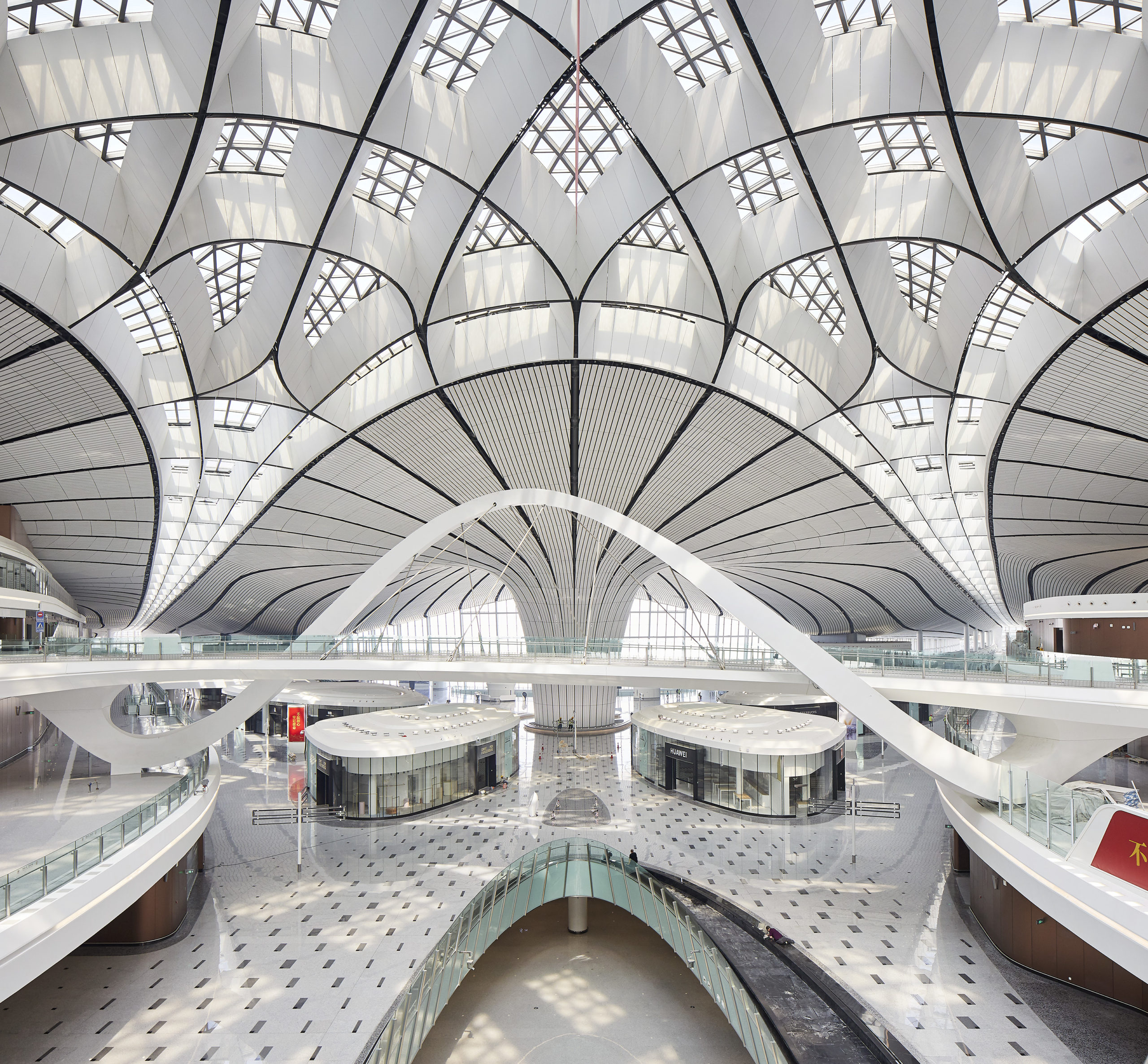
Beijing Daxing International Airport by ADP Ingénierie; Zaha Hadid Architects, Beijing, China
2020 A+Awards Project of the Year
2020 A+Awards Popular and Jury Winner, Transportation Infrastructure
Airport design presents a number of challenges, not least of which is overcoming the typological pitfall of being ‘non-places’ — or, transit hubs that will never be destination in their own right. This is precisely why Zaha Hadid Architects’ use of scenography is so brilliant. Organized around a central courtyard—an ode to traditional Chinese spatial organization—every aspect of the design aims at intuitively guides passengers as they navigate throughout the building, while simultaneously making a memorable visual statement.
The multilayered space consists of six flowing forms that radiate from the central space and are housed beneath a network of linear skylights. The roof itself springs from the ground, creating structural spans of up to 100m that not only maximize fluidity of space—thereby alleviating congestion—but also ensure the highest degree of flexibility for future reconfigurations. Mind-bending curves permeate the design both structurally and aesthetically, and the high-contrast black and white aesthetic accentuates the transportive motif of fluidity.
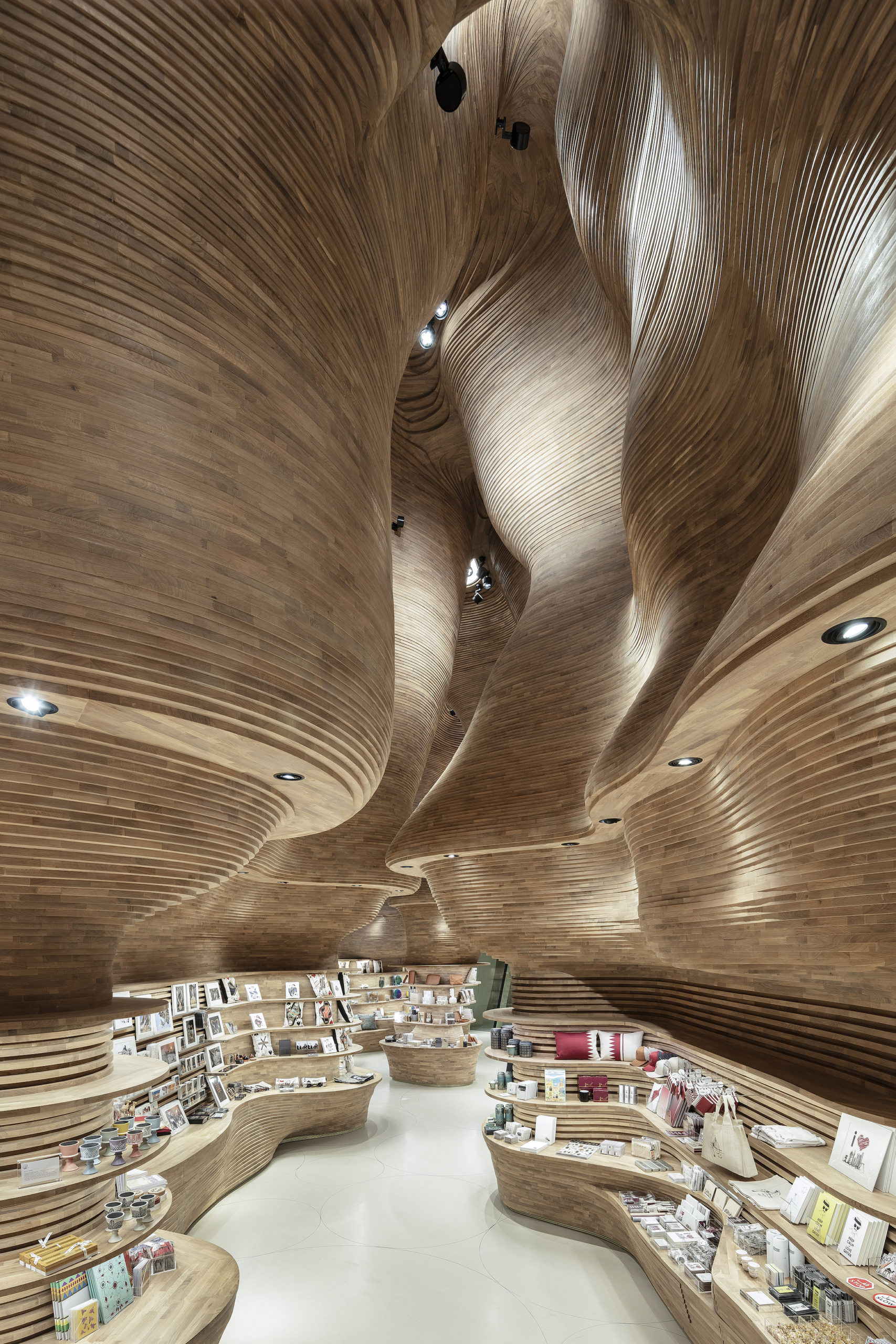

National Museum of Qatar Gift Shops by KOICHI TAKADA ARCHITECTS, Doha, Qatar
2020 A+Awards Jury Winner, Retail
The Dahl Al Misfir (Cave of Light) is an expansive, phosphorescent cave with a deep internal structure located in the heart of Qatar. Known for the moon-like glow emitted by its gypsum crystals, this natural landmark served as inspiration for the National Museum’s gift shop design. Using 3D modeling software, 40,000 individual wooden pieces, all curved, were designed to create an immersive timber grotto.
Each piece is entirely unique and required skillful and attentive on-site assembly by a team of artisans overseen by Italian master carpenter Claudio Devoto. The result is a complex, scenographic space that breaks down boundaries between natural and architectural, heritage and innovation, arousing wonder and a sense of discovery that can be carried into the museum’s exhibitions.
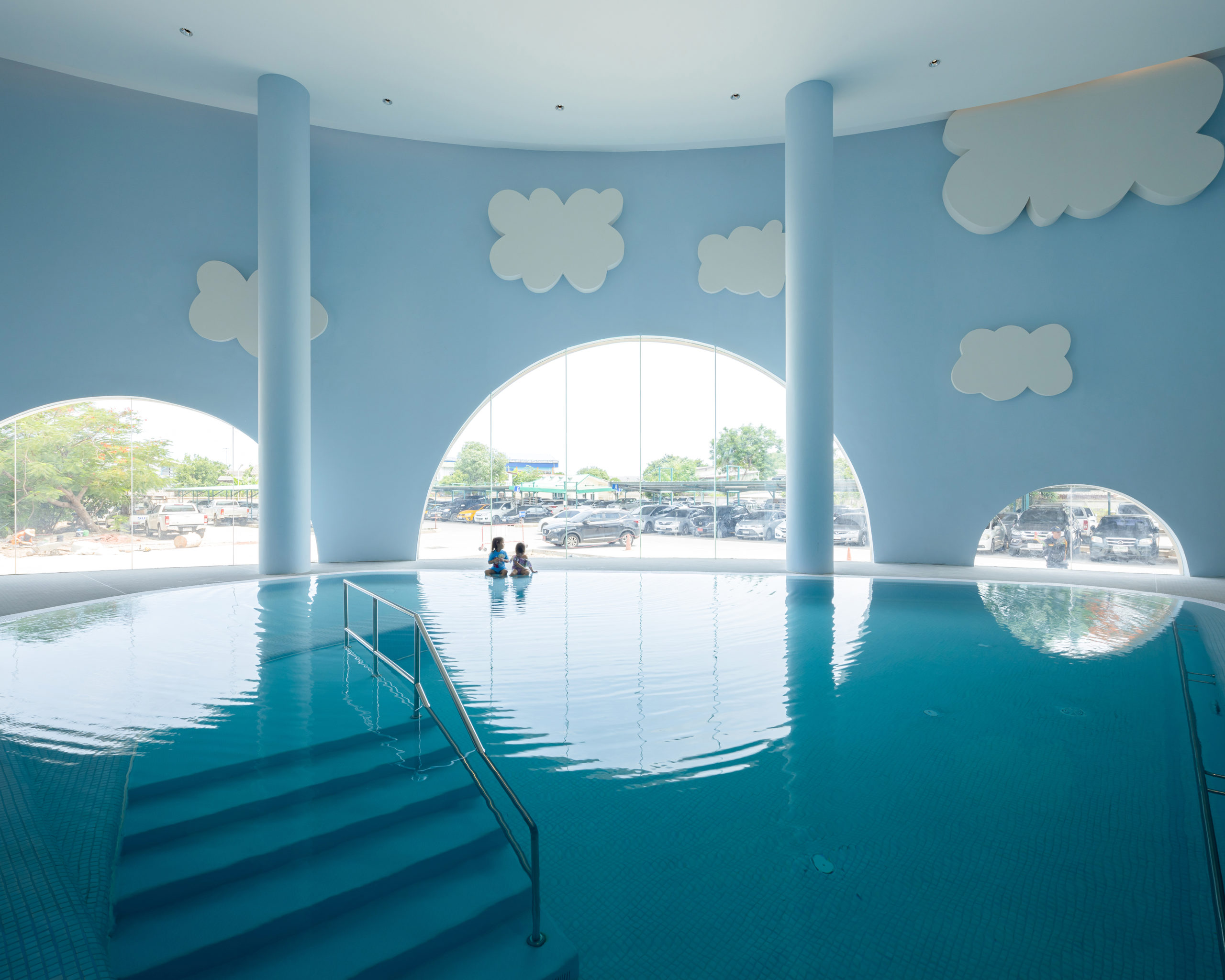
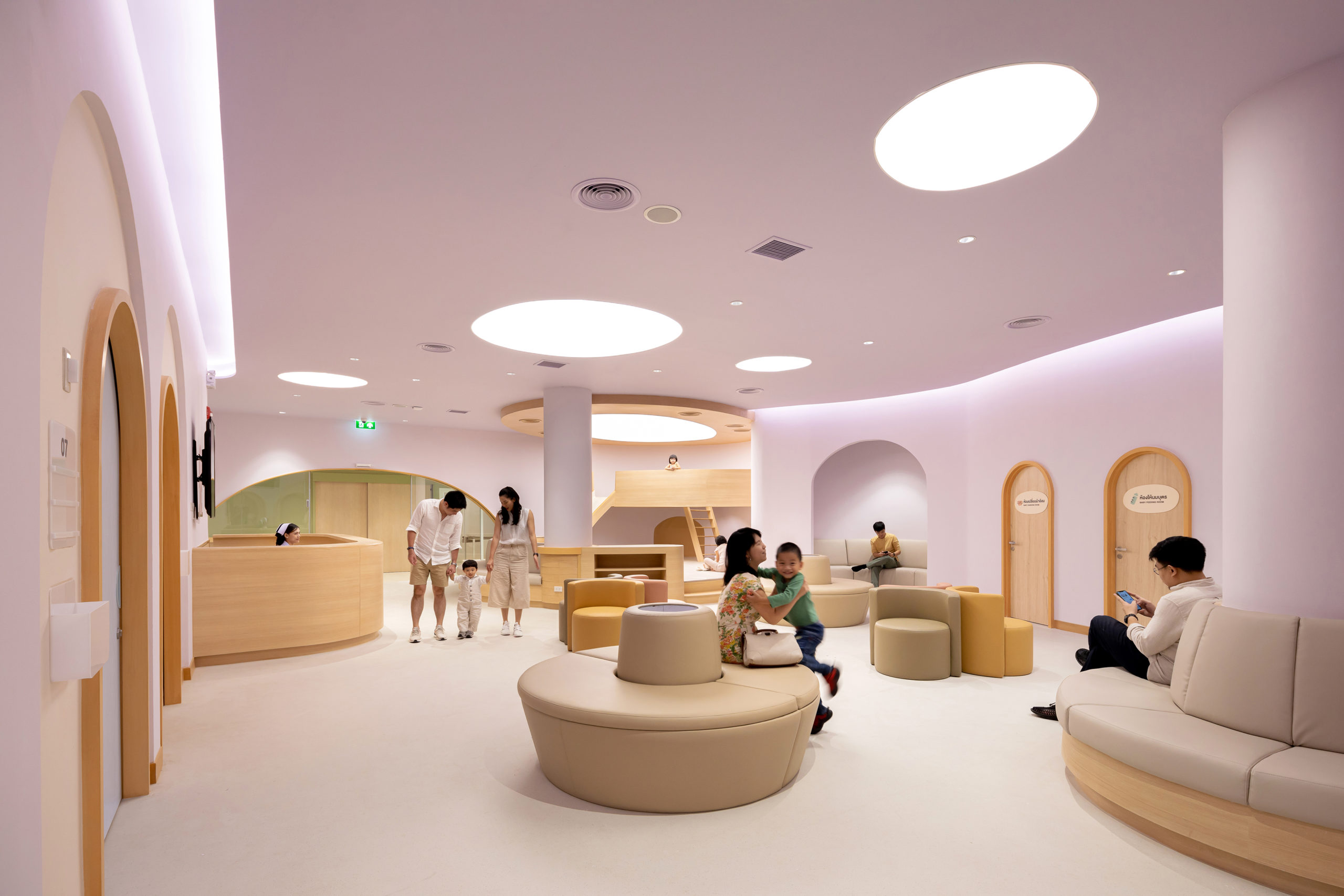
EKH CHILDREN HOSPITAL by IF (Integrated Field co.,ltd), Samut Sakhon, Thailand
2020 A+Awards Jury Winner, Health Care & Wellness
Hospitals are known as sterile environments that can give rise to ominous emotional climates for patients and their families. Designed with children in mind, this hospital in Thailand is a scenographic environment that aims to inject a sense of fun into medical visits that could otherwise be scary. A giant slide greets patients in the entrance hall, setting the tone for the rest of their stay.
A cartoonish, cloud-covered pool is visible through windows that face onto the parking lot, and each clinic’s waiting area also appears like a sort of light-hearted playground. Deliberately avoiding perfect geometric forms, every aspect—from doorways to seating areas—are deliberately formed with curved lines, and scaled to a size that corresponds to children’s body proportion. The pastel color scheme and use of indirect natural light further augment the gentle accommodation of the space, which bespeaks softness, comfort, and warmth for young patients.

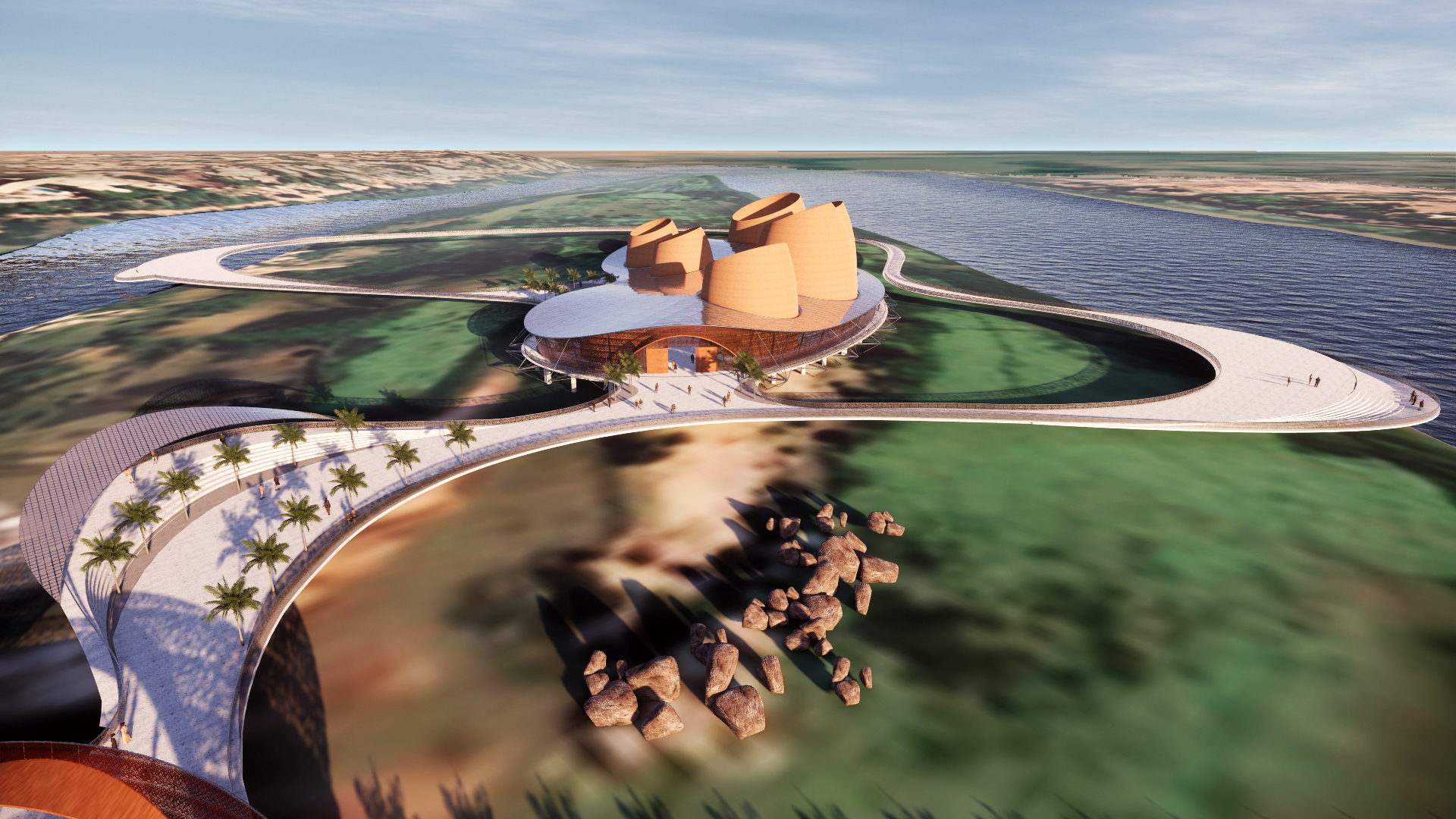
NigerHeritage Niamey Musée du Fleuve by Stantec, Niamey, Niger
2020 A+Awards Popular Winner, Unbuilt Cultural
NigerHeritage is an international effort that seeks to preserve Niger’s rich cultural and natural history by displaying an unparalleled collection of archaeological and paleontological treasures that belong to the expansive desert area and its nomadic peoples. Located in Niamey, the design draws inspiration from the vital relationship between the capital’s geo-historical location and the exceptional museum collection.
Originally a cluster of villages, the city was founded on the Niger River in the 18th century; water has been central to life, commerce and recreation and will continue to be vital in the future. In a nod to these urban roots, the museum is conceived as a village. Each gallery stands as a unique unit that recalls the earthen structures of previous centuries. To reach the collection, however, visitors must travel across a pathway over the river and through native vegetation — it is a didactic journey that reinforces the role of the natural world as a precondition for the urban and cultural one displayed in the galleries.
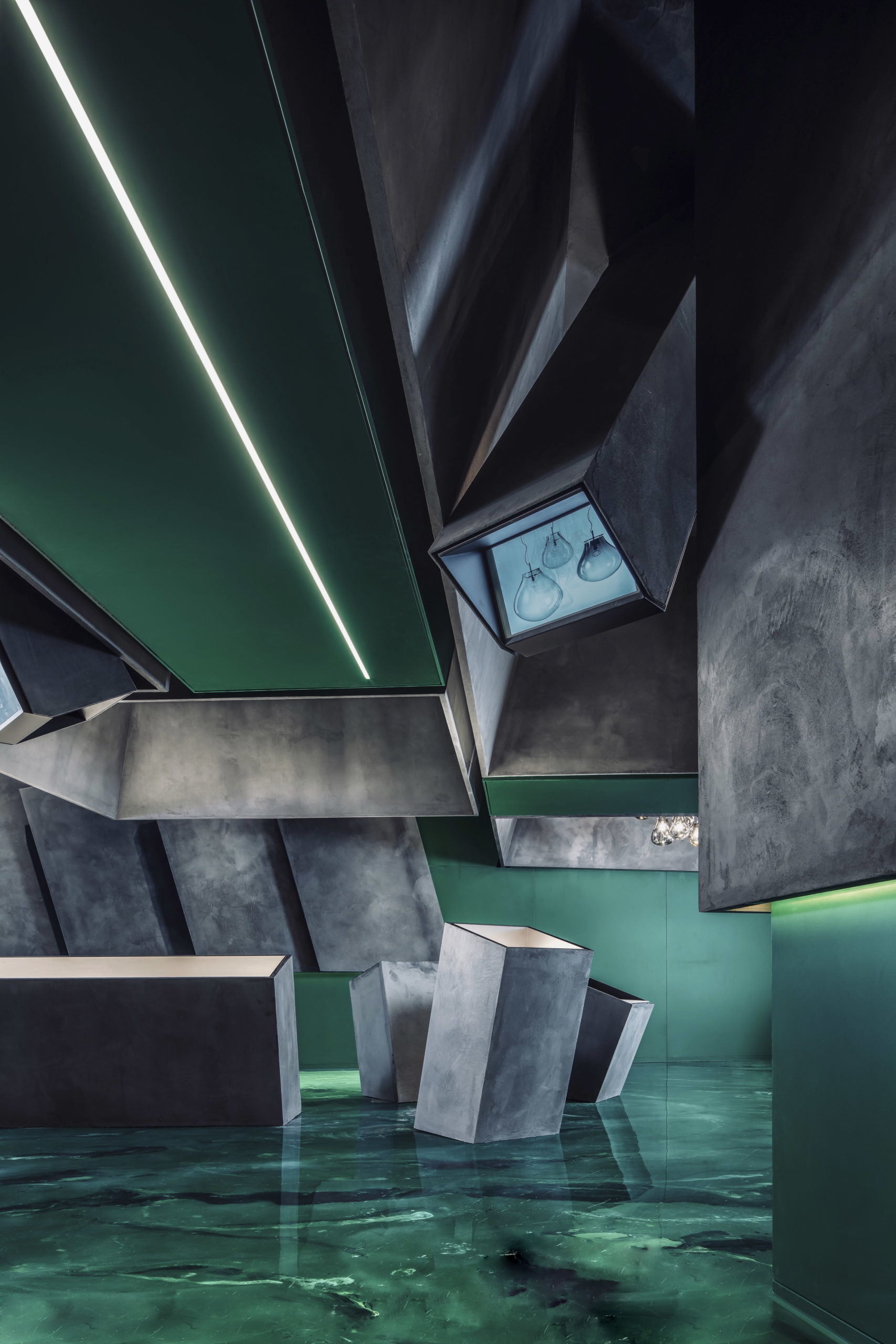

Green Leopard Lighting’s Flagship Store by Cun Design, Zhongshan, China
2020 A+Awards Jury Winner, Showrooms
The ancient town of Zhongshan, where large and small lamp manufacturers are everywhere, is located in “the capital of Chinese lighting.” As a business, it can be challenging to stand out in a place where more than 3,600 shops compete in the same trade. Architectural scenography offers a unique strategy for memorable and effective branding, since most lighting stores stage lamps and fixtures in domestic scenes.
In the showroom for Green Leopard Lighting, an art resin floor painted with water ghost green ink nods to the brand’s name and logo; when illuminated with electric light, the floor emits a green aurora-glow. The room itself is a geological study in projecting shapes that, like crystals in a cave, accentuate the various lamps and fixtures by strategically channeling interactions between light and shadow. The sum is a remarkable scenographic space that links brand and product by allowing the lights themselves to shine.
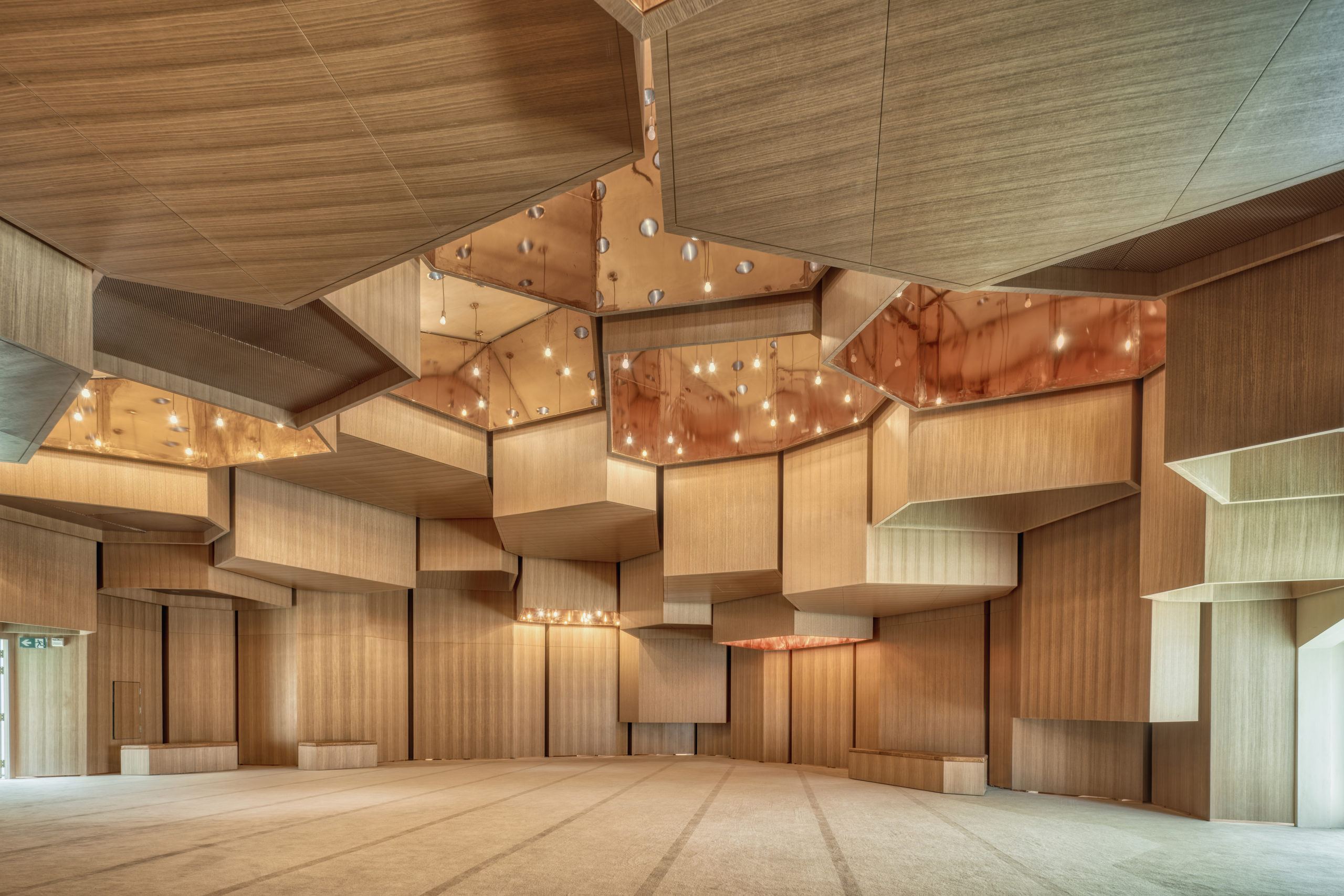
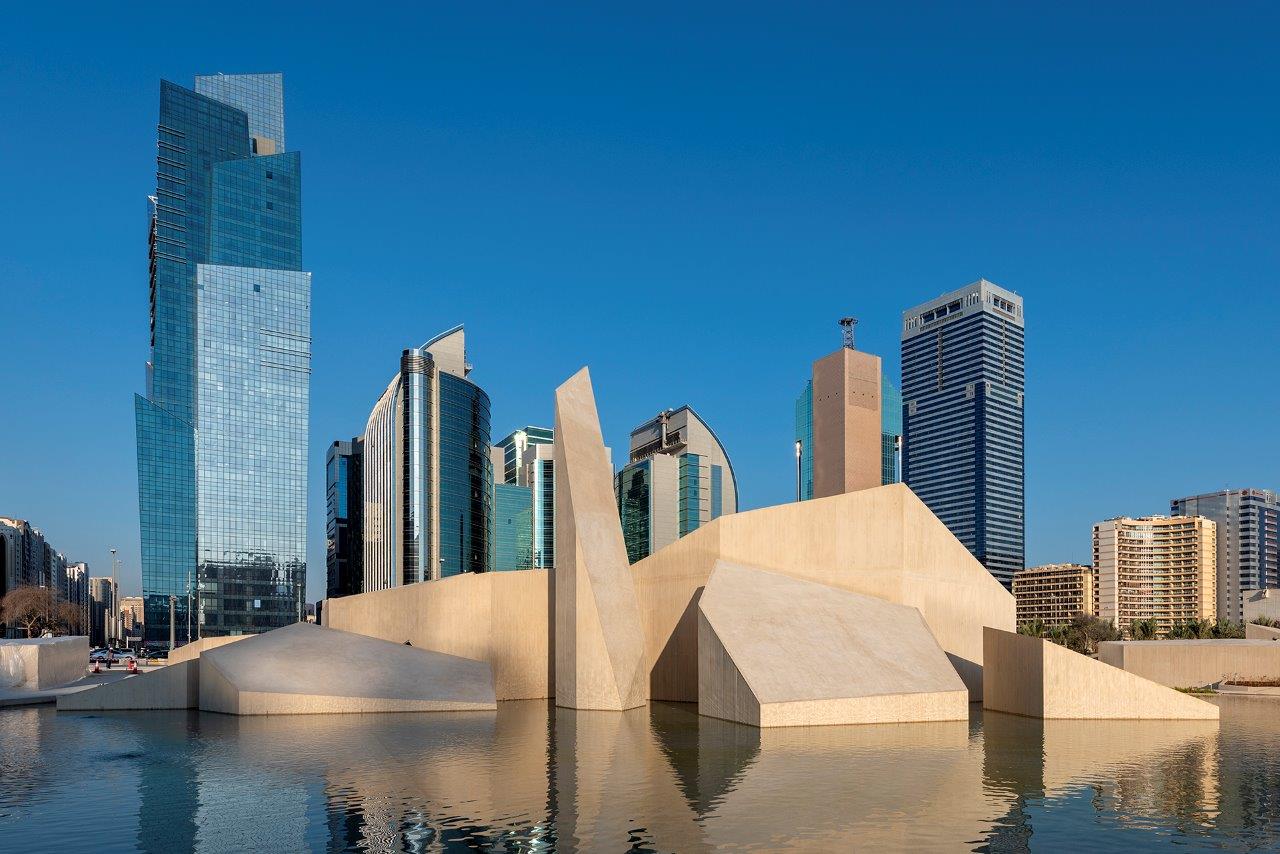
Al Musalla – The Mosque – Al Hosn Area by DCT Abu Dhabi, Abu Dhabi, United Arab Emirates
2020 A+Awards Jury Winner, Architecture+Ceilings
The Al Musalla is a religious complex that also serves as a key component in the revitalization plan for the Qasr Al Hosn Fort—Abu Dhabi’s oldest building, constructed in the 18th century to protect the nascent city’s only freshwater well. Drawing on its site’s historical importance, the prayer rooms are separated into a series of small-interconnected buildings that emerge like rocks from the park’s water feature. Their irregular geometric shapes evoke the distinctive mud crack patterns found in the coastal desert landscape, emphasizing the centrality of water in the city’s history and foundations.
This motif is carried throughout the buildings’ interiors. Hexagonal and pentagonal shapes suspend from the ceiling; some are hollowed-out into skylights, while others are sculptural, closed volumes that hang like architectural stalactites. Yet, the design avoids totalizing parallels with caves by conjuring abstract star formations using accent pendant lights. In so doing, architectural scenography allows for an immersive spiritual experience that is grounded in the city’s history yet far removed from its urban chaos.
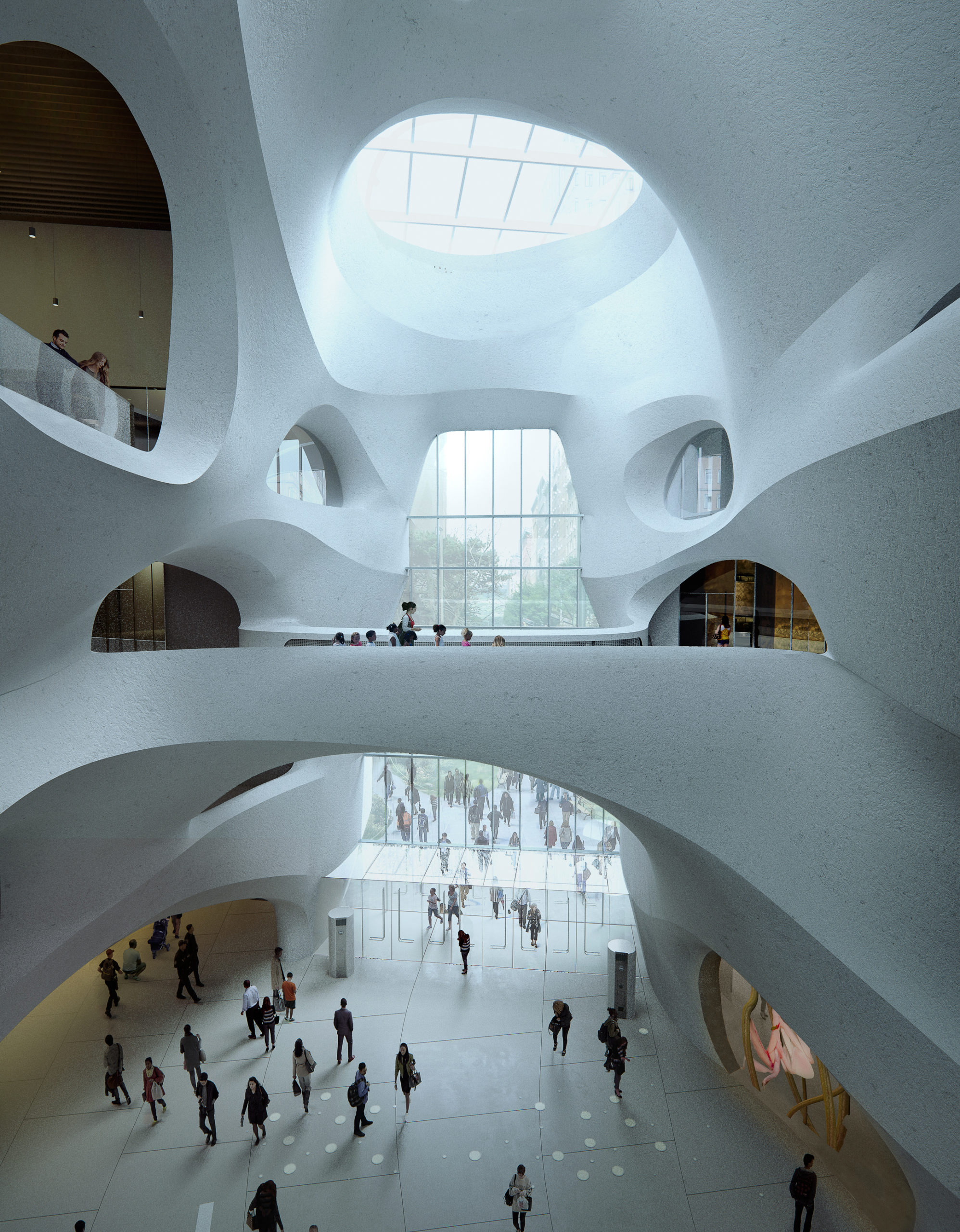
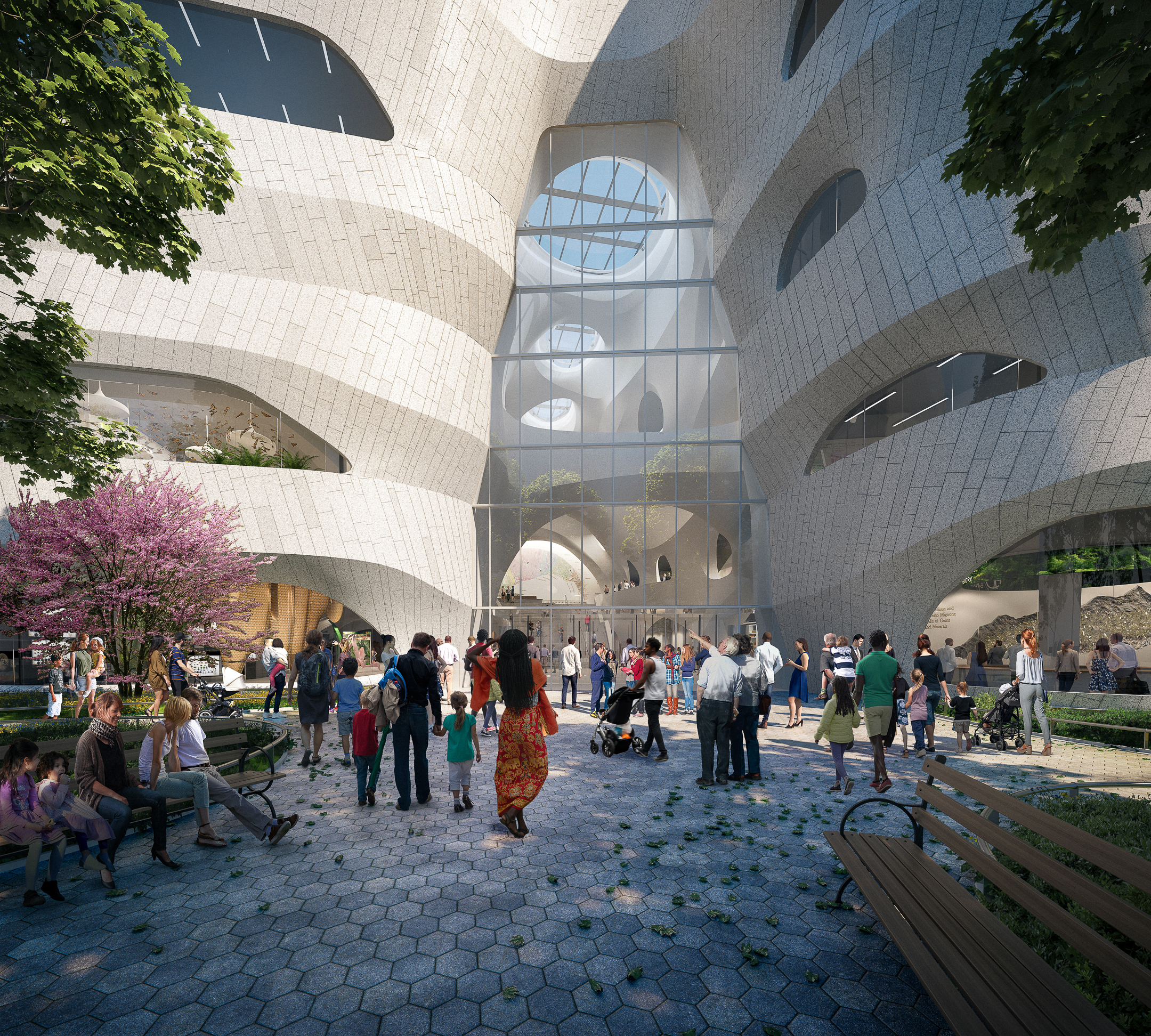
Richard Gilder Center for Science, Education, and Innovation by Studio Gang, Manhattan, New York
2020 A+Awards Jury Winner, Unbuilt Cultural
New York’s Natural History Museum has always been an eclectic building that has leaned into many additions, restorations, and renovations throughout its long history. The latest addition is timely and seeks to reignite public engagement with science. Currently, under construction, Studio Gang looked to natural processes when coming up with the design. In contrast to the various historical revivals (Beaux-Arts, Richardsonian Romanesque, and Victorian Gothic), the new building favors timeless architectural scenography.
The textural, curvilinear treatment of interior and exterior walls— composed of thick, pale blocks with amorphous window openings—is seemingly more akin to geological formation than architectural design. This approach makes a statement about the contents within the museum and aims to create an immersive, scenographic environment that encourages visitors to actively explore. The continuous, flowing spatial experience engenders a participatory sense of discovery, as visitors move beneath and across connective bridges and along sculpted walls.

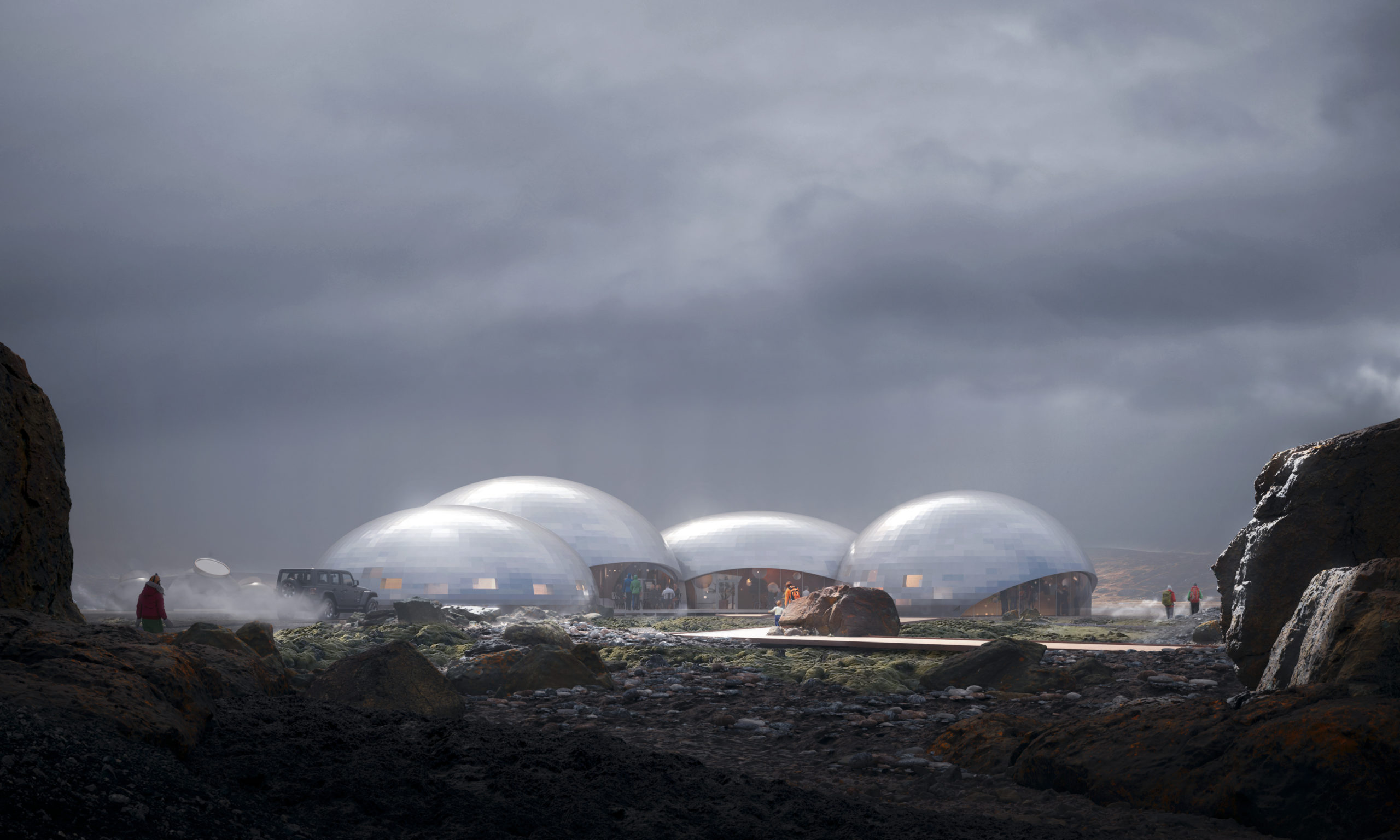 Reykjanes Retreat by Some Space, Reykjavik, Iceland
Reykjanes Retreat by Some Space, Reykjavik, Iceland
2019 A+Awards Jury Winner, Unbuilt Hospitality
Situated in a lava field on Iceland’s Western coast, this scenographic hotel offers an escape for guests looking to unplug, disconnect, and get in touch with the vast natural surroundings. The architectural scenography is a staged journey from a winding road that weaves through the rocky, windswept landscape, to the cluster of metallic domes that draw on the other-worldly aesthetic of the landscape.
Metallic facade cladding produces soft reflections that capture changes in lighting conditions; the material also evokes the exterior of a spaceship, further underscoring the transportive aspect of the scheme. Small pathways radiate from the main house (where communal activities take place) and lead to private cabins scattered around the lava field. The interior design revels in local materials such as driftwood, wool, and volcanic rock, creating cozy but unfamiliar spaces that are perfectly primed for digital detox.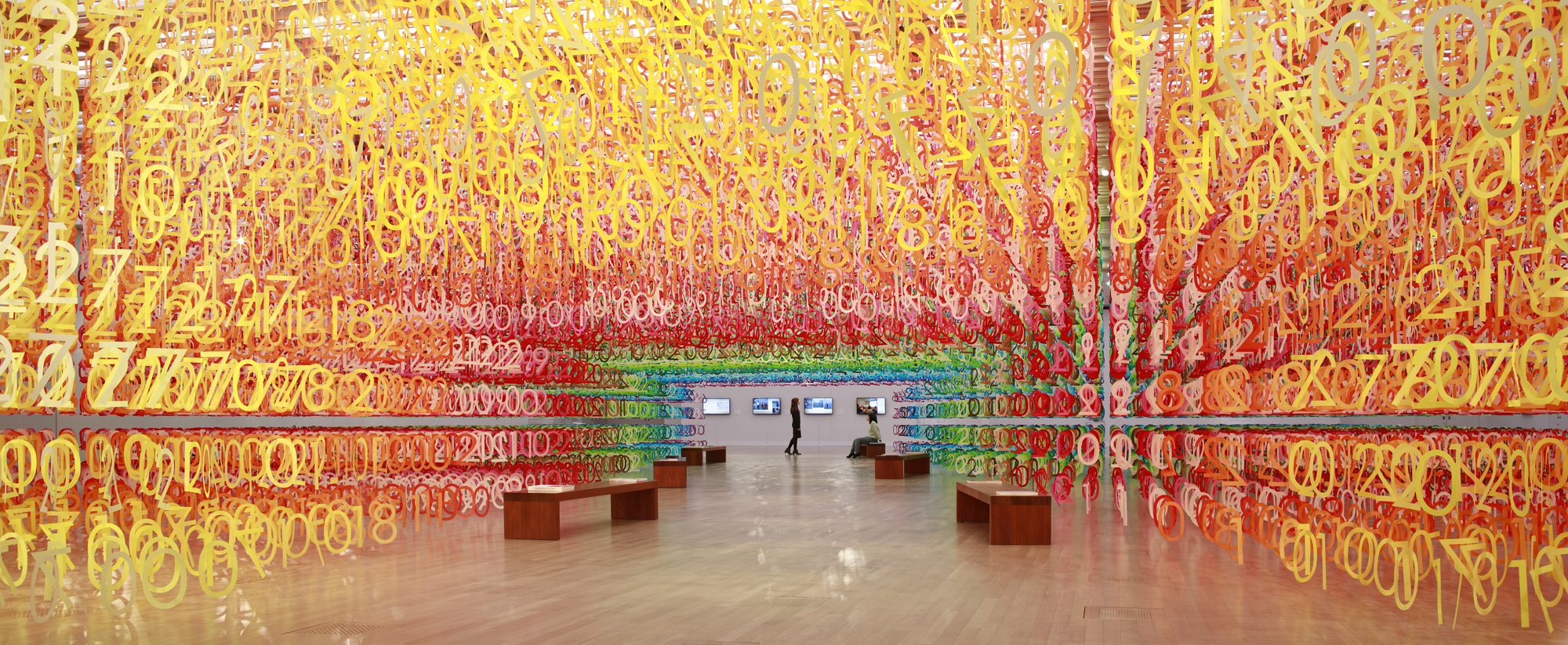

Forest of Numbers by emmanuelle moureaux architecture + design, Tokyo, Japan
2020 A+Awards Jury Winner, Architecture+Color
“Shikiri” is a Japanese neologism coined by architect Emmanuelle Moureaux to describe the act of dividing and creating space with color. This installation fills the 21500 sq ft White Cube exhibition room with 100 colors. Conceived to celebrate the tenth anniversary of the National Arts Center in Tokyo, the fabric of the space is laden with symbolism. More than 60,000 pieces of suspended numeral figures from 0 to 9 are regularly aligned in three-dimensional grids to visualize the coming decade.
The ten layers of the installation represent ten years; each layer consists of 4 digits that express the corresponding year, such as 2, 0, 1, and 7 for 2017, randomly positioned on the grids. A pathway cuts through the center of the room, inviting visitors to enter the numerical forest and to see, touch, and feel colors with their senses; the scenographic environment heightens their awareness of the emotive power of color in their lives.
Do you have a project that stands out like the ones above? Submit it for the 2021 A+Awards and be a part of the world’s largest awards program for architecture!
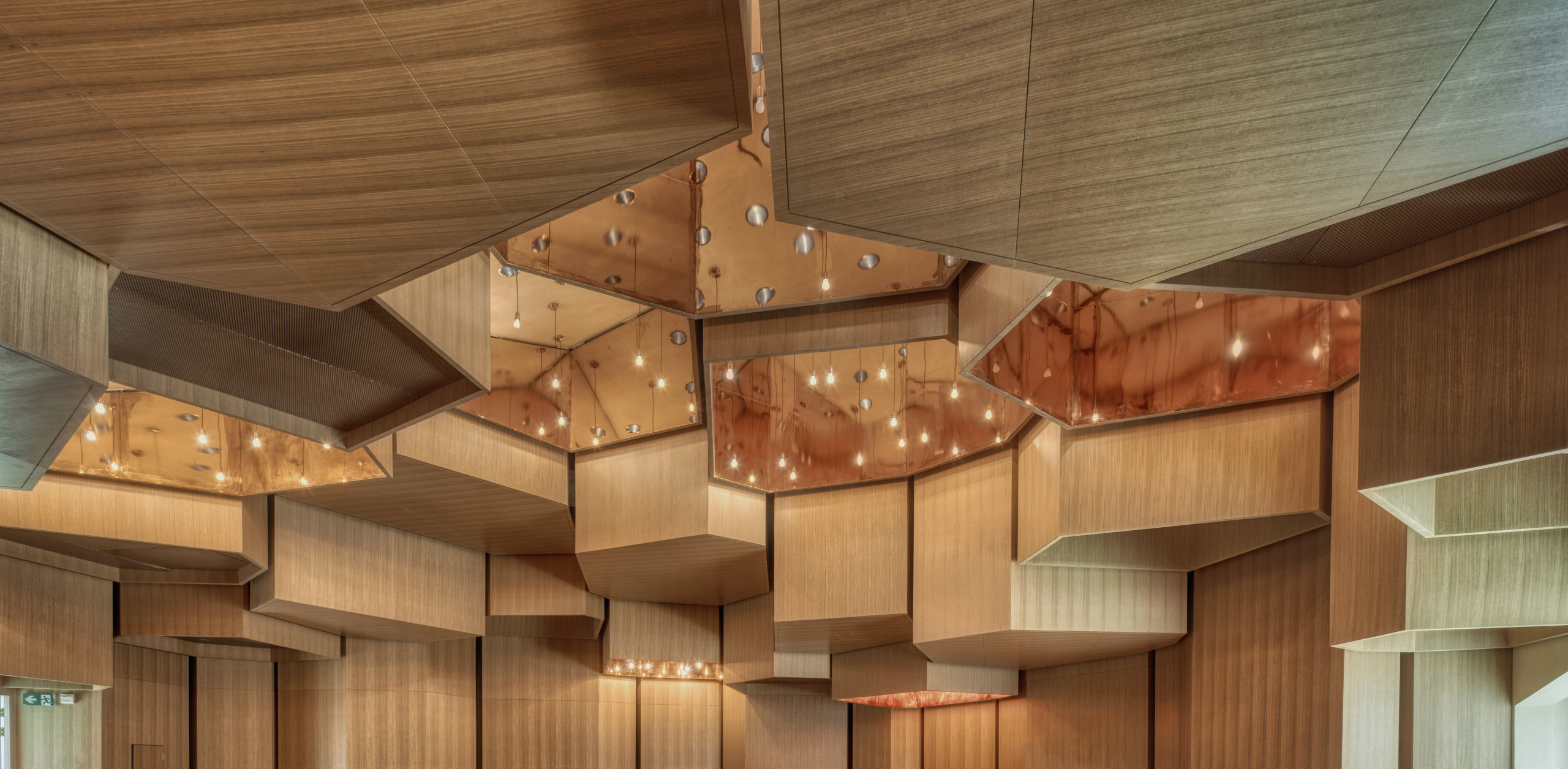





 Forest of Numbers
Forest of Numbers  Richard Gilder Center for Science, Education, and Innovation
Richard Gilder Center for Science, Education, and Innovation 


